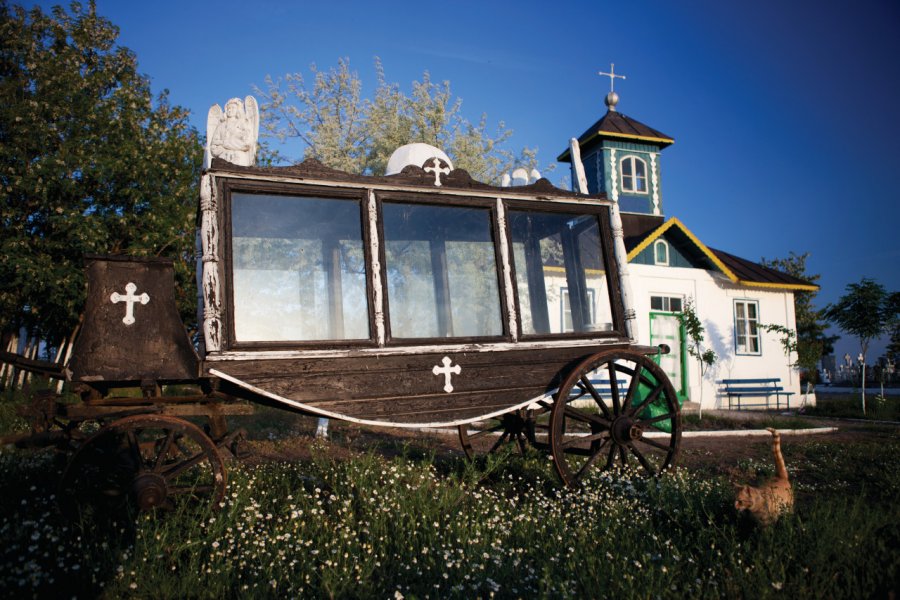Travel Guide Sulina
Find an accommodation
Advertising
Located at the very end of the arm that bears its name, it is the delta's largest settlement, with some 3,000 inhabitants. At first glance, Sulina may seem a little sad, with its abandoned fish cannery and ship repair yard. But the town's charm comes from the feeling of being at the end of the world, and the imprint of its flourishing past: the town enjoyed a glorious era from the mid-19th century (and into the mid-20th), with the canalization of the arm and the establishment in 1856 of the European Danube Commission, to manage navigation on the river. Many foreigners settled here: Armenians, Germans, Italians, Turks, Jews, Greeks... They built beautiful homes, still visible today, many of which have fallen into disrepair or even ruin. The traces of this cosmopolitan past are particularly visible in the cemetery, which is well worth a stop. Graves in English stand side by side with those in German and Italian. There's also a Turkish Muslim square, right next to the Jewish one. If you look hard enough, you'll even find the grave of a Greek pirate! As for monuments, Sulina has three lighthouses: the oldest, dating from the early 19th century, is located in the center (strada II, 43). It houses a museum, closed for renovation until 2022. Another lighthouse, dating from 1887, is located on the left bank of the Danube. The third, more recent and 48 metres high, is far from the city, at the entrance to the navigation canal. At the very end of Strada I, which runs along the river, you can also admire the former European Commission Palace. Not far away is Sfântul Nicolae Cathedral, built in 1910 in neo-Romanesque style. Sulina beach, a long stretch of wilderness on the shores of the Black Sea, is 2 kilometers from the center.
What to visit Sulina?
Advertising
Suggested addresses Sulina
Weather at the moment
Advertising
Organize your trip with our partners Sulina
Transportation
Book your plane tickets
Car Rental
Boat rental
Accommodation & stays
Find a hotel
Holiday rental
Find your campsite
Tailor-made trip
Immersion travel
Services / On site
Activities & visits
Find a doctor





